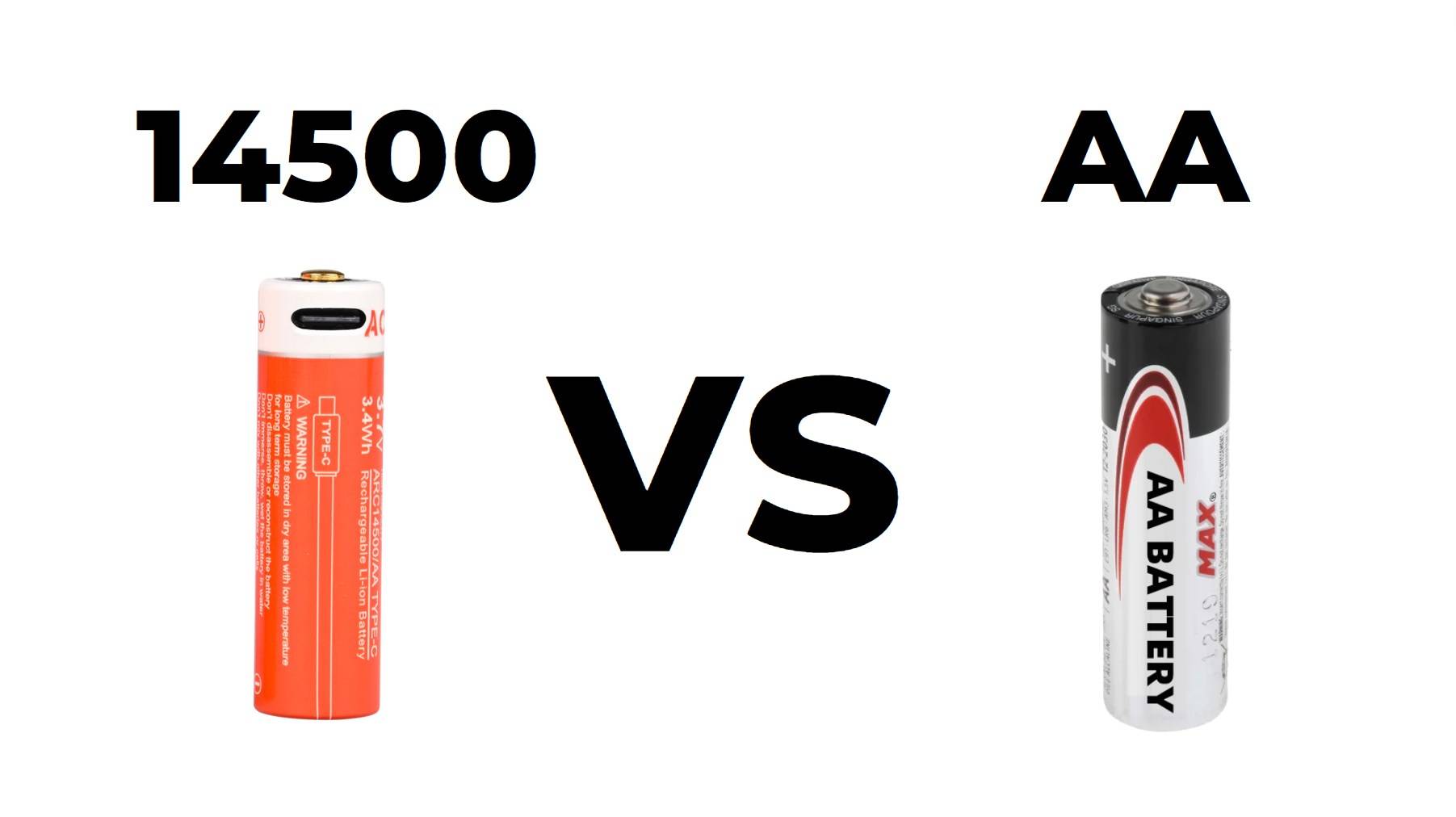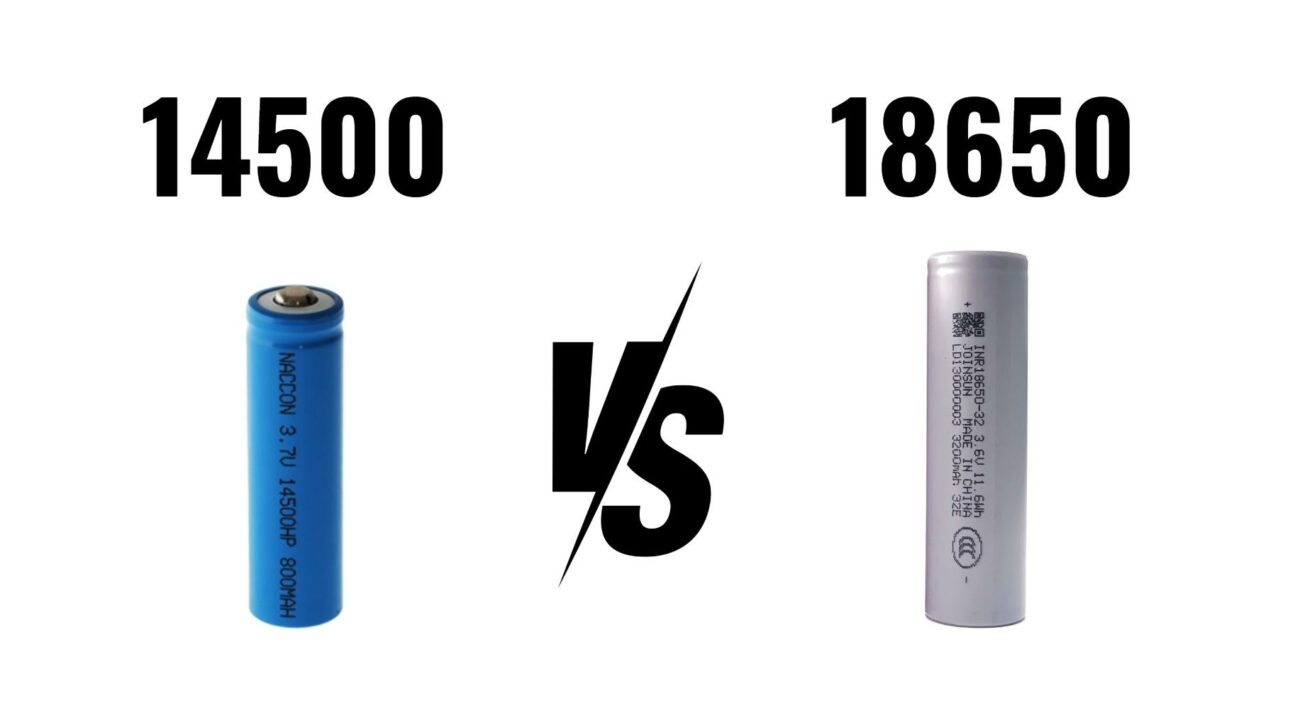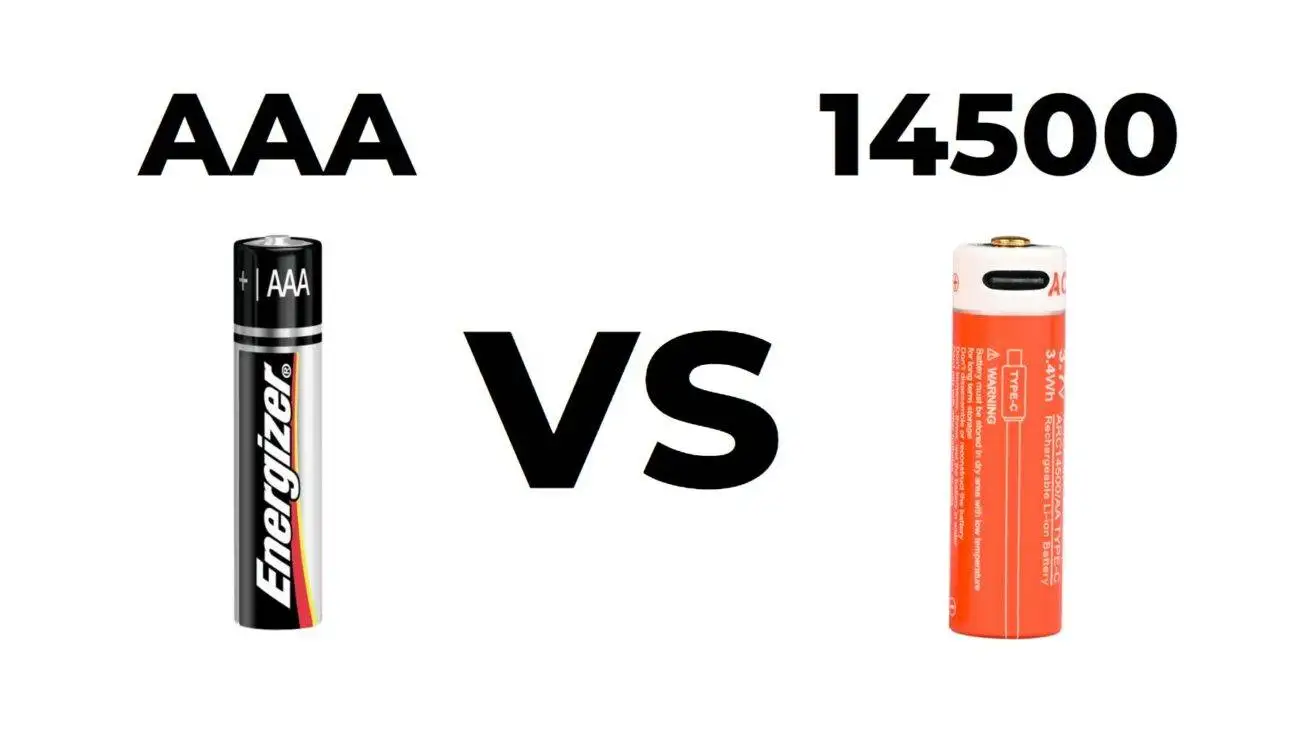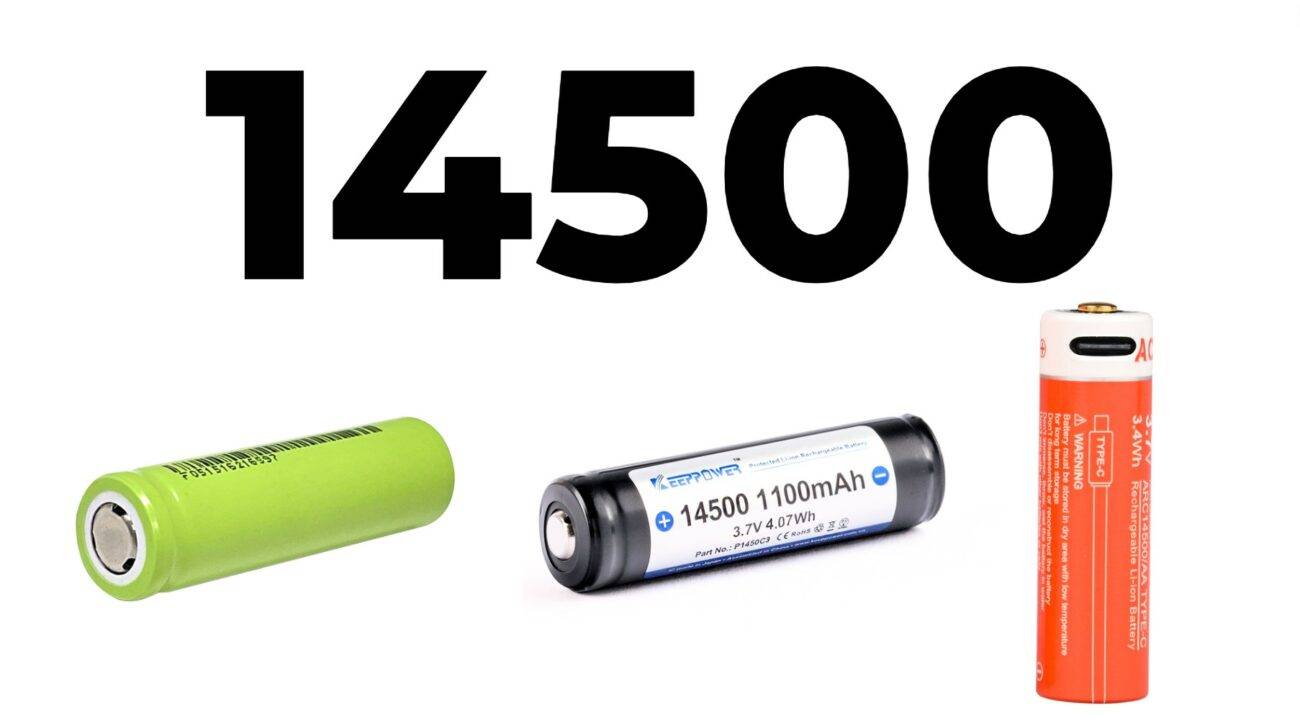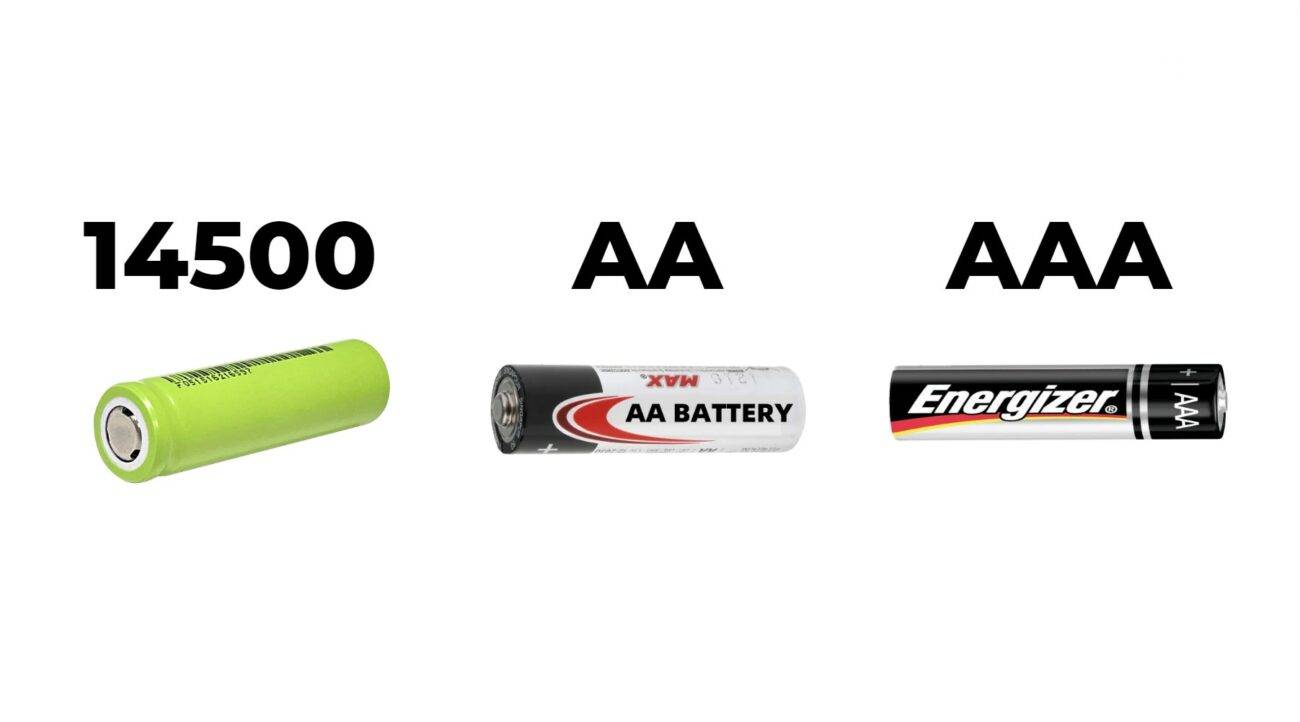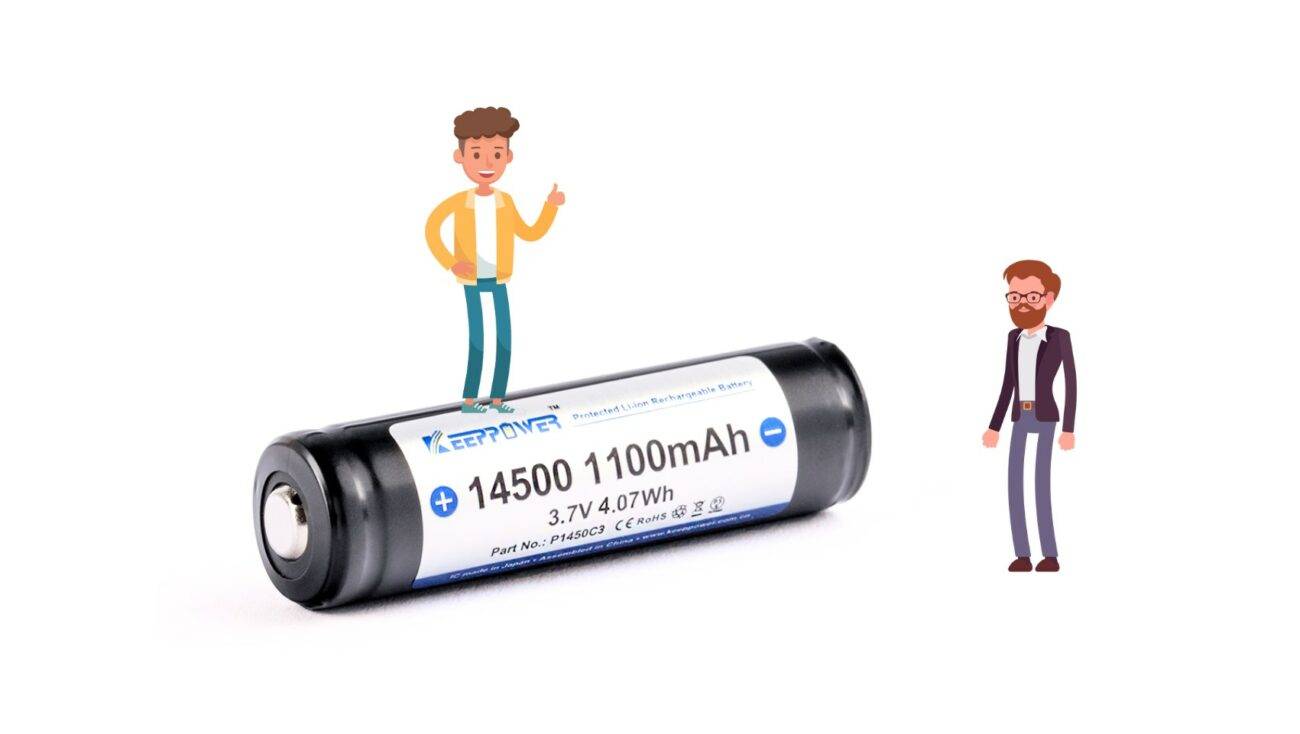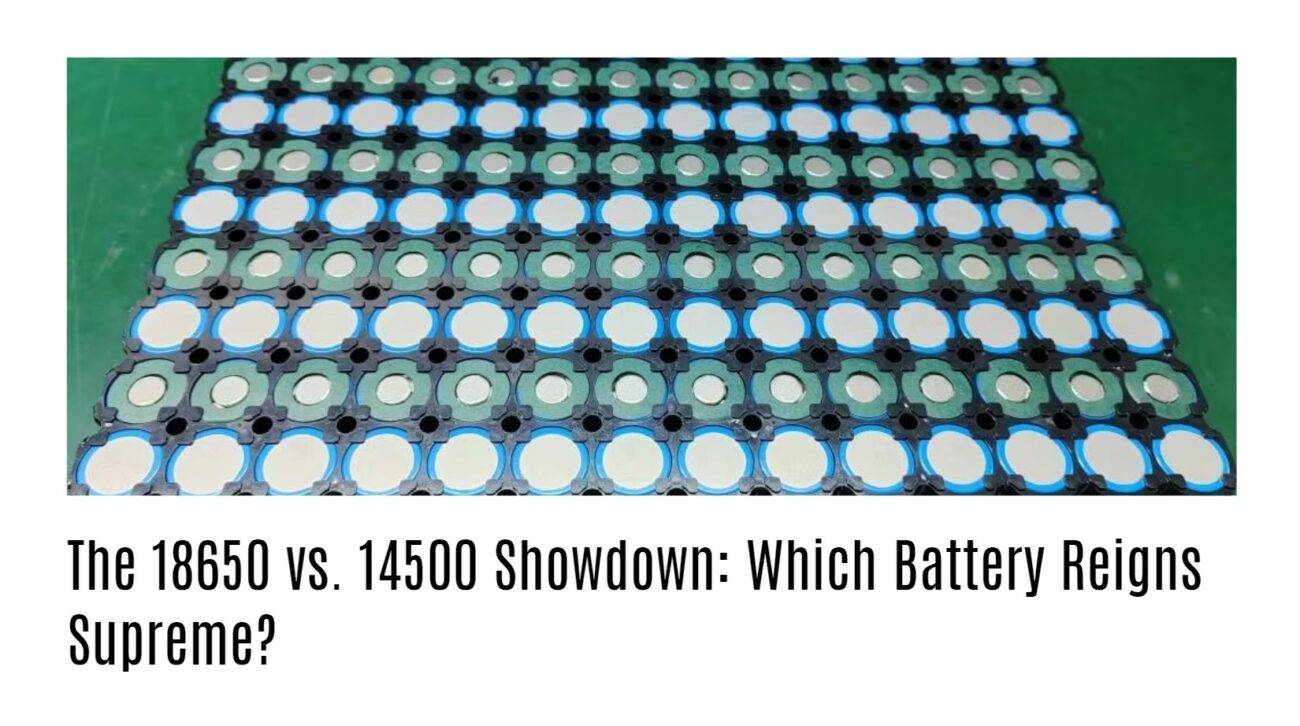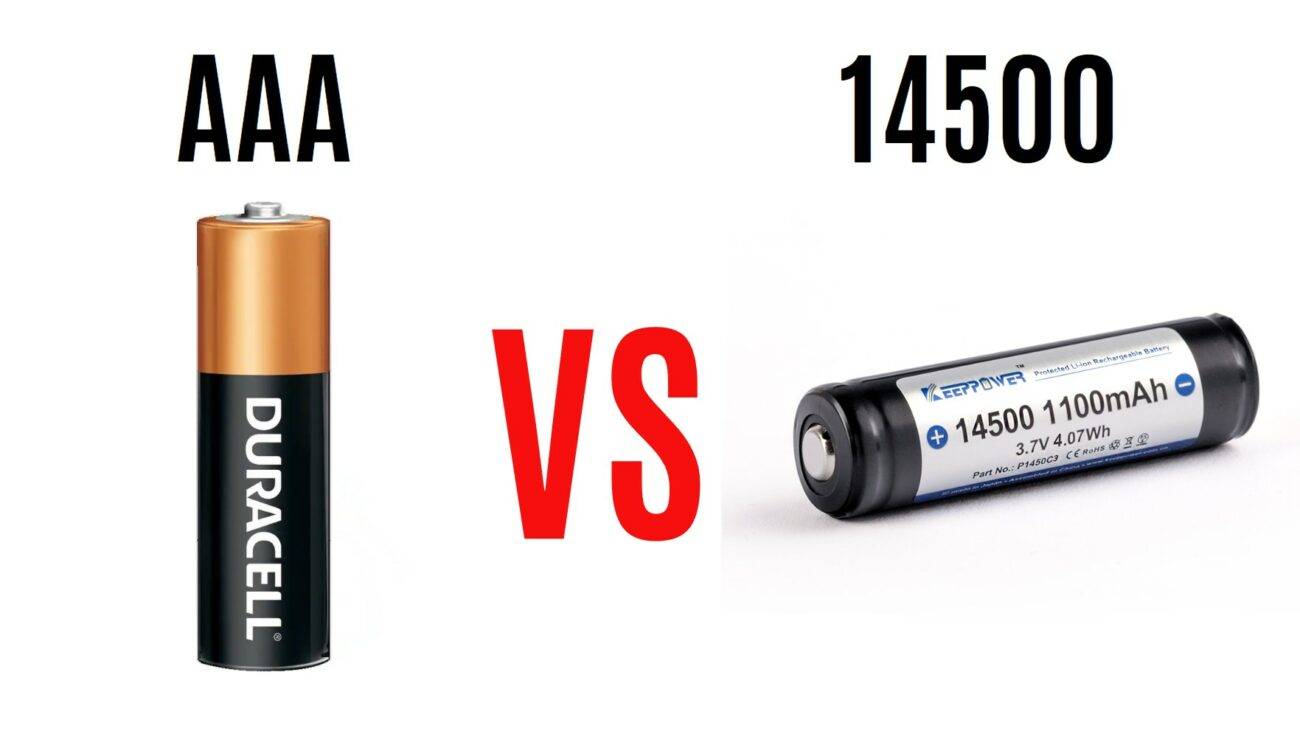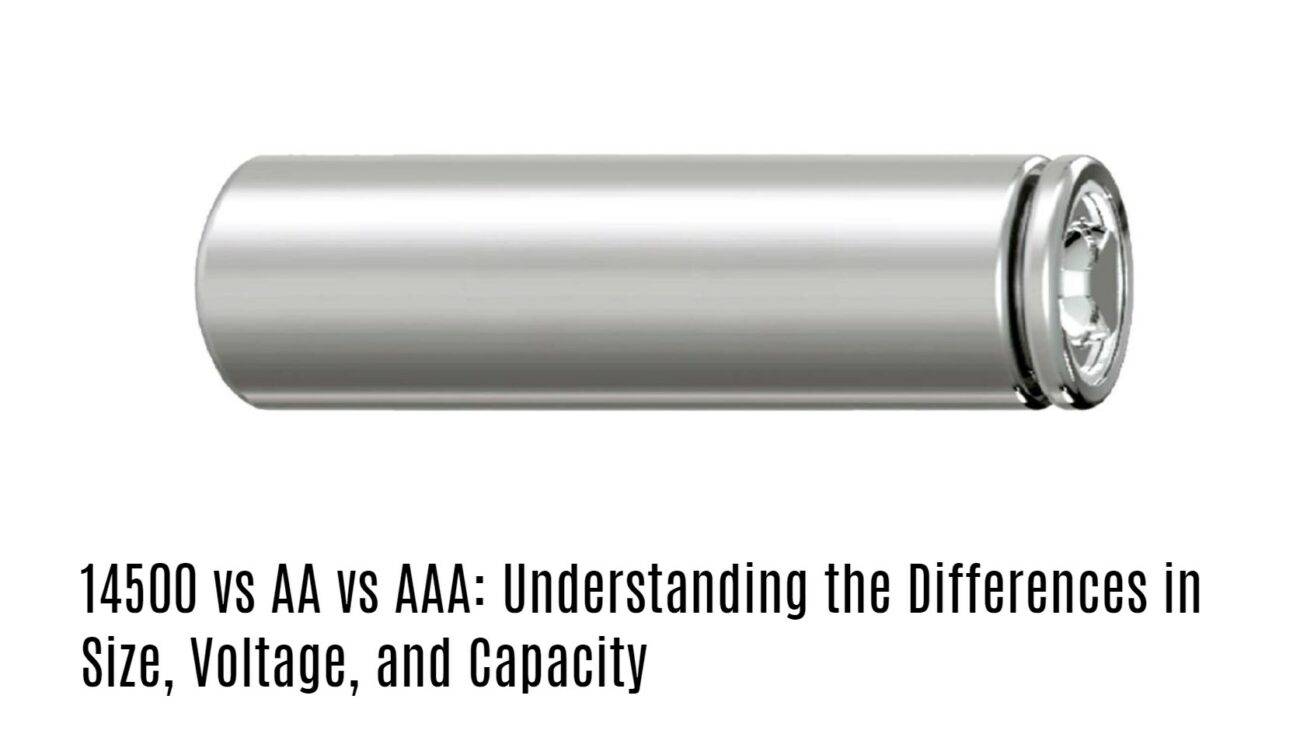4500 and AA batteries look similar in size but differ significantly in chemistry, voltage, capacity, and usage. The 14500 is a rechargeable lithium-ion battery with a nominal voltage of 3.7V, whereas AA batteries are usually 1.5V alkaline or 1.2V rechargeable NiMH cells. Because of these differences, they generally cannot be used interchangeably without risking device damage.
What Are the Physical and Chemical Differences Between 14500 and AA Batteries?
The 14500 battery is a lithium-ion rechargeable battery measuring approximately 14mm in diameter and 50mm in length, nearly identical to the AA battery size, which varies slightly between 14.5mm to 14.9mm. Chemically, 14500 uses lithium-ion technology, while AA batteries can be alkaline, zinc-carbon, NiMH, or lithium primary types, with differing voltages and rechargeability.
The lithium-ion chemistry in 14500 batteries provides higher energy density and voltage compared to the mostly single-use alkaline AA batteries.
How Do the Voltage and Capacity of 14500 and AA Batteries Compare?
A key difference is voltage: 14500 batteries have a nominal voltage of 3.7V and can reach 4.2V fully charged, while AA batteries work at 1.5V (alkaline) or 1.2V (NiMH rechargeable). Capacity varies, with 14500 batteries typically offering 600-1000mAh, whereas AA alkalines offer around 2000-3000mAh. NiMH rechargeable AA batteries provide about 1500-2500mAh.
Higher voltage and different capacity profiles make 14500 batteries more suitable for specific high-power devices.
Why Are 14500 and AA Batteries Not Interchangeable in Most Devices?
Due to the higher voltage of 14500 batteries, using them in devices designed for AA batteries can cause damage or malfunction. Devices relying on 1.5V or 1.2V input are not built to withstand the 3.7V or more from a 14500 cell. Conversely, AA batteries provide insufficient voltage and power for devices designed for lithium-ion 14500 cells.
Using the wrong battery type without checking device specifications risks safety and performance issues.
Which Devices Typically Use 14500 Batteries Versus AA Batteries?
14500 lithium-ion batteries power devices requiring higher voltage and energy density such as LED flashlights, certain vape devices, and compact electronics. AA batteries are widespread in household electronics like remote controls, clocks, toys, and wireless mice, where lower voltage and disposable or NiMH rechargeability suffice.
Understanding device requirements is crucial for selecting the appropriate battery.
How Does Rechargeability and Lifespan Differ Between 14500 and AA Batteries?
14500 batteries are rechargeable lithium-ion cells with a typical cycle life of 300-500 charges. AA batteries come in disposable alkaline types with no rechargeability or rechargeable NiMH types lasting 500-1000 cycles. Rechargeable AA batteries often outlast 14500 cells in cycle longevity but deliver less voltage per cell.
Recharge cycle expectations influence user choice based on device use and cost considerations.
Are There Safety Concerns When Using 14500 Batteries in AA Slots?
Yes, safety concerns arise if 14500 batteries are used improperly in AA slots due to their higher voltage and different charging requirements. Overvoltage can cause overheating, damage device circuits, or shorten lifespan. 14500 batteries need chargers and devices designed for lithium-ion cells to ensure safe operation.
Proper usage following manufacturer guidelines is essential to avoid hazards.
When Could It Be Appropriate to Substitute a 14500 Battery for an AA Battery?
Substitution is only advisable if the device explicitly supports the 14500’s higher voltage and lithium-ion chemistry. Some specialized electronics are designed for lithium-ion replacements and allow 14500 batteries. Always consult device manuals or manufacturer recommendations before attempting to substitute to prevent damage.
Never assume physical size compatibility means electrical compatibility.
What Are the Cost Differences Between 14500 and AA Batteries?
14500 lithium-ion batteries tend to be more costly upfront due to their advanced chemistry and rechargeability. AA alkaline batteries are inexpensive disposable options, while rechargeable NiMH AA batteries are moderately priced but cost-efficient long-term. Pricing depends on capacity, brand, and battery type.
Redway Battery offers competitive pricing and customization for lithium-ion technology including 14500 cells, ensuring value and quality.
How Does Redway Battery Innovate in Lithium-Ion Battery Solutions?
As a leading OEM lithium battery manufacturer, Redway Battery combines advanced factory automation with rigorous quality control to produce durable, high-performance 14500 lithium-ion cells. Their expertise supports custom solutions with consistent cycle life, safety features, and compliance to global standards.
This commitment makes Redway a trusted supplier for clients needing reliable, efficient lithium-ion battery options.
Redway Battery Expert Views
“At Redway Battery, we understand the critical role battery selection plays in device performance and safety. The fundamental differences between 14500 and AA batteries highlight why informed choices are vital. Our approach leverages lithium-ion innovation, robust manufacturing, and tailored solutions to meet diverse customer needs. Whether supplying high-energy 14500 cells or conventional AA alternatives, we prioritize reliability, longevity, and safety, enhancing user satisfaction worldwide.”
Conclusion
Though 14500 and AA batteries share similar dimensions, they differ greatly in voltage, chemistry, capacity, and intended applications. Their interchangeability is generally unsafe and not recommended without precise device compatibility. Choosing the right battery involves understanding device requirements, safety considerations, and battery specifications. Brands like Redway Battery provide dependable 14500 lithium-ion batteries and related products designed for optimal performance and safety.
Frequently Asked Questions
Q1: Can I use a 14500 battery in any AA battery device?
No, most devices designed for AA batteries cannot handle the 3.7V output from 14500 batteries and may be damaged.
Q2: Are rechargeable AA batteries better than 14500 batteries?
It depends on the device and usage: AA rechargeable NiMH batteries have lower voltage but often longer cycle life, while 14500 batteries offer higher voltage and energy density.
Q3: How do I identify a 14500 battery?
14500 batteries are marked with their size code and typically have 3.7V nominal voltage; physically similar to AA but often labeled lithium-ion.
Q4: What devices are specifically designed to use 14500 batteries?
High-drain devices like LED flashlights, electronic vaporizers, and some precision instruments.
Q5: Does Redway Battery offer custom lithium battery solutions?
Yes, Redway Battery specializes in full OEM/ODM customization for lithium batteries including 14500 cells.



